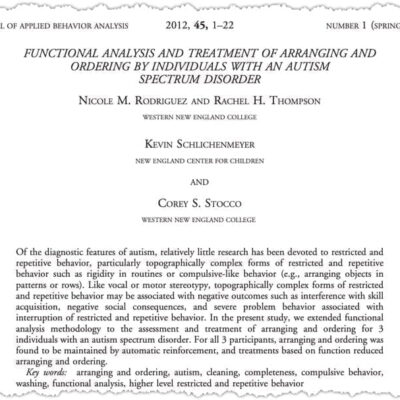On-demand CEUs for BCBAs focused on single-subject design and related research methods
List Grid
Sort by Popularity
Saved products
Showing 1 – 2 of 2 results Showing all 2 results Showing the single result No results found
Filters Sort results
Reset Apply
Mastering the Basics of Visual Analysis Katie Wolfe & Timothy A. Slocum (126) This tutorial offers a systematic, evidence-based procedure for training individuals to conduct valid and reliable visual analyses of single-subject data. It features extensive discrimination training and practice opportunities; adaptive instruction… Show more (+) This tutorial offers a systematic, evidence-based procedure for training individuals to conduct valid and reliable visual analyses of single-subject data. It features extensive discrimination training and practice opportunities; adaptive instruction and remediation for errors; and full audio narration in a self-paced, mobile-friendly format. Show less (-) BCBA CEUs: 2 | ||
Reducing Biases in Clinical Judgment with Single-Subject Treatment Design Daniel J. Moran & Wendi Tai (13) Read the following article and pass a 12-question quiz on it:
Moran, D. J., & Tai, W. (2001). Reducing biases in clinical judgment with single-subject treatment design. The Behavior Analyst Today, 2(3)… Show more (+) Read the following article and pass a 12-question quiz on it:
Moran, D. J., & Tai, W. (2001). Reducing biases in clinical judgment with single-subject treatment design. The Behavior Analyst Today, 2(3), 196-203. Show less (-) BCBA CEUs: 1 |




